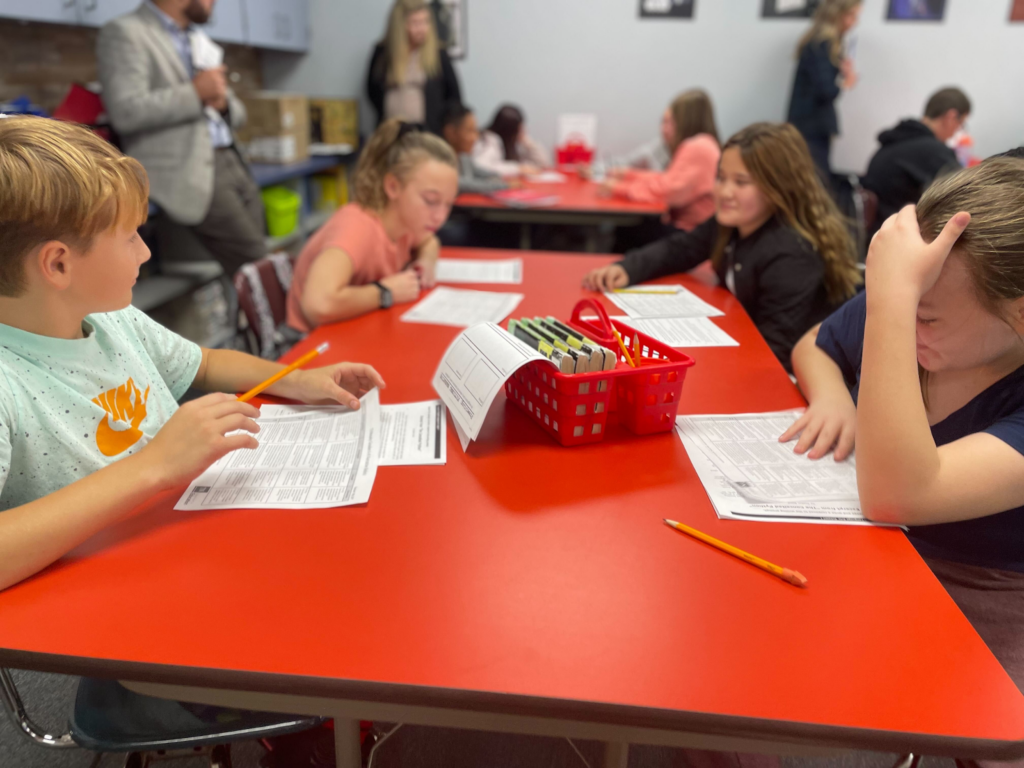Support Learner Self-Assessment
Support Learner Self-Assessment NOTE: This strategy is part of the self-paced Use Assessment as a Tool for Learning Course Self-assessment is empowering learners to consider where they are in their own learning by intentionally creating transparency of the learning process, and creating a safe space to make mistakes. Self-assessment is often supported by a…
Data Trackers
Use Data Trackers NOTE: This strategy is part of the self-paced Use Assessment as a Tool for Learning Course When learners track their own progress, assessment for learning (formative assessment) quickly becomes assessment as learning. Learners figure out where they are in their learning and how they learn best, which is powerful. Ideally, learners track their proficiency…
Move On When Ready
Move On When Ready NOTE: This strategy is part of the self-paced Use Assessment as a Tool for Learning Course Learners are empowered to progress through the learning experience based on their demonstration of the desired skills and knowledge. This can be as small and contained as learners working through the writing process at…
Create Playlists for Learners
Create Playlists for Learners NOTE: This strategy is part of the self-paced Customize the Learning Experience Course A learning playlist is a sequence of learning experiences and resources designed for students to work through at their own pace in order to achieve the desired learning objectives. Playlists are inherently flexible; learners can work on…
Use Tech Tools to Provide Just-In-Time Assessment Feedback
Use Tech Tools to Provide Just-In-Time Assessment Feedback Quickly gather assessment data to use to personalize learning and provide students just in time feedback. Bright Spots Gain inspiration from authentic examples of this strategy shared by teachers who have used them with their learners. Creating your own Bright Spots? Let’s get them out into…
Co-Create Rubrics with Learners
Co-Create Rubrics with Learners NOTE: This strategy is part of the self-paced Design Performance-Based Assessments Co-creating rubrics with learners ensures that you clearly share the desired learning outcomes for a learning experience and gives learners ownership over their learning. It not only creates clarity of expectations for the educator but more importantly for the…
Encourage Retakes & Test Corrections
Encourage Retakes & Test Corrections NOTE: This strategy is part of the self-paced Design Performance-Based Assessments Encouraging retakes and test corrections provides learners with an opportunity to identify their mistakes, review their work, revisit the content, address misconceptions, and correct their answers. This practice not only helps students improve their grades but also ensures…
Provide Peer Feedback Protocols
Provide Peer Feedback Protocols NOTE: This strategy is part of the self-paced Use Assessment as a Tool for Learning Course Introduce feedback protocols to students that provide a structure for giving high-quality peer feedback. Example protocols include: Warm & cool feedback 2 stars and 1 wish 1 glow and 1 grow I like, I…
Using Exit Tickets
Exit Tickets NOTE: This strategy is part of the self-paced Use Assessment as a Tool for Learning Course Formative assessment is meant to provide information during the learning process. Exit tickets are a way to know if learners “caught what you taught” by simply asking them a question or two before they leave the…
Station Rotation
Design Station Rotations NOTE: This strategy is part of the self-paced Use Assessment as a Tool for Learning Course Station rotation empowers learners to rotate through different stations or learning activities, each designed to meet their individual needs and learning styles. Ideally, stations include a variety of learning settings: independent (ideal for DOK levels…
Checks for Understanding
Checks for Understanding NOTE: This Strategy is part of the self-paced User Assessment as a Tool for Learning Course Checks for understanding quickly measure whether learners have mastered the material they are learning. They highlight the process of learning for both the teacher and the learner and provide a safe space for the learner…
Conferencing as an Assessment
Conferencing as a Method of Assessment NOTE: This strategy is part of the self-paced Use Assessment as a Tool for Learning Course Teacher-student conferencing is a one-on-one conversation between a teacher and a learner to discuss the learner’s learning progress. It allows teachers and learners to gather information about what learners know and understand,…











